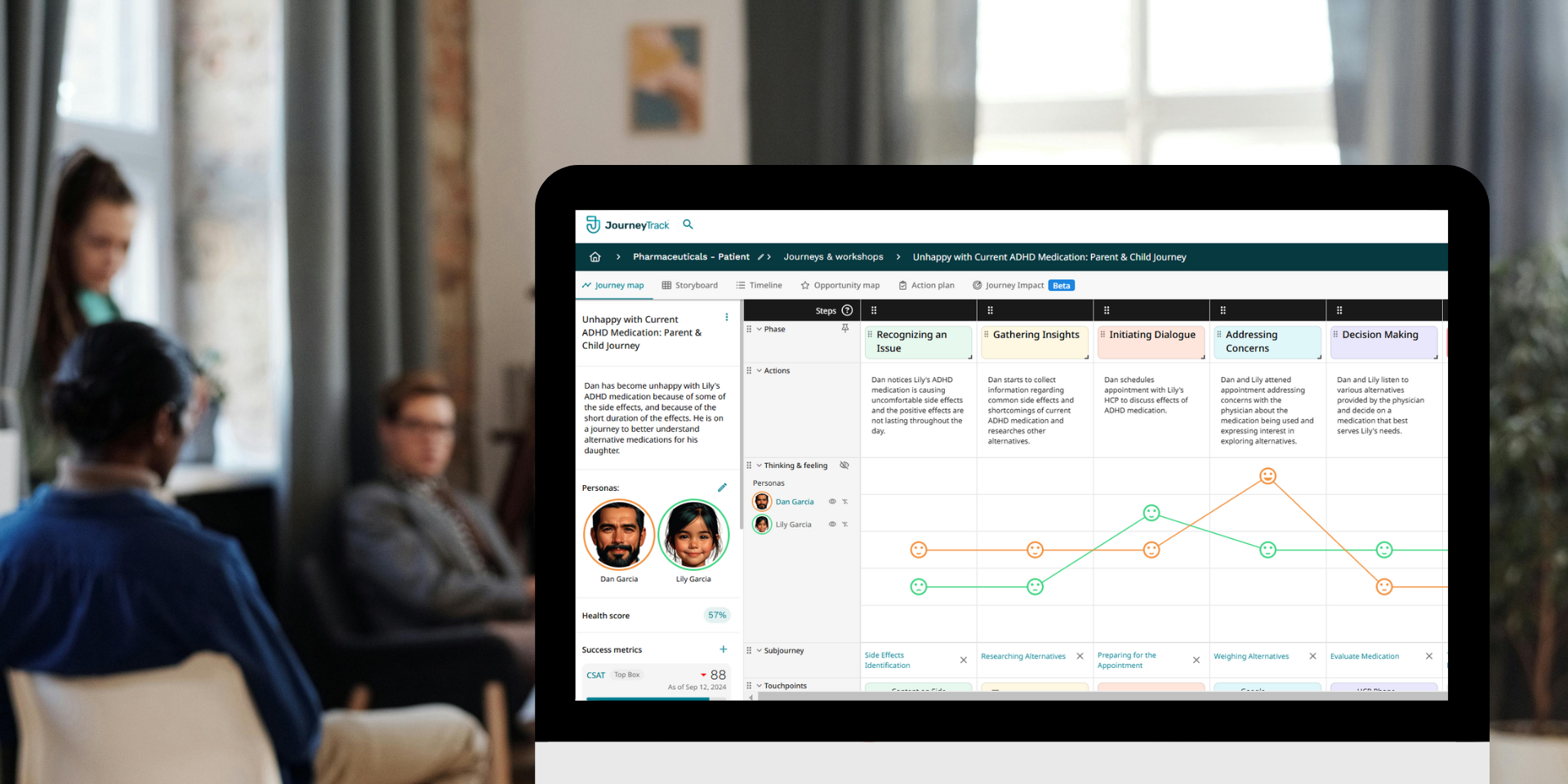In this guide, we will break down the steps you need to take to integrate emotional journey mapping into your Customer Experience (CX) strategy seamlessly.
Step 1: Understand the Importance of Emotional Journey Mapping
Before diving in, recognize why emotional journey mapping is crucial for your CX strategy. It helps reveal pain points and opportunities for delight that traditional metrics might overlook.
Understanding your customers' emotional landscape allows you to tailor experiences that genuinely resonate. As Bruce Temkin, a leading CX expert, emphasizes: "Customer emotions drive loyalty more than any other factor. The companies that actively manage emotions as part of their experience will win the loyalty battle."
This means going beyond demographics and focusing on the sentiments interconnected with their interactions.
Realizing the intrinsic link between emotions and customer loyalty. Happy customers are more likely to return and recommend your brand to others, creating a positive feedback loop that drives long-term success. Forrester Research supports this, stating, "Emotion is the strongest driver of customer loyalty across industries, far outweighing ease and effectiveness."
Step 2: Identify Customer Touchpoints
Map out all the customer touchpoints in their journey with your brand. These could include website interactions, customer support calls, and more. Understanding each touchpoint is essential for understanding emotional responses.
Consider every stage of interaction, from discovery to purchase and even post-purchase moments. Each stage presents unique opportunities to forge emotional connections. According to Annette Franz, author of Customer Understanding: "Every interaction your customer has with your brand either enhances or detracts from their overall experience. Mapping touchpoints helps identify where you can improve those moments." (Franz on CX Journey Inc.)
It's also vital to include both online and offline touchpoints. For example, how does a customer's in-store experience compare to their online shopping experience? Gartner Research highlights: "Omnichannel alignment across touchpoints is no longer optional; it's essential for ensuring a seamless and emotionally engaging customer journey."
Each path can yield insights that enrich the emotional journey mapping process.
Step 3: Gather Customer Feedback
Utilize surveys, interviews, and social media to gather genuine customer feedback. This data will help illuminate their emotions at different stages of the journey.
Reach your audience by tapping into various platforms. As Jeanne Bliss, a pioneer in CX, advises: "Don’t just ask for feedback—listen to it with the intent to act. Customers want to feel heard and their emotions validated."
Engaging with customers on social media can provide real-time reactions, while focused interviews can explore specific experiences.
Make sure your feedback channels are easy to use and accessible. According to a PwC Experience Report: "43% of consumers would pay more for greater convenience, and 73% say customer experience is a key driver of their purchasing decisions."
The more straightforward the process, the more likely customers are to share their thoughts candidly.
Step 4: Create the Emotional Journey Map
Combine your insights from the feedback and touchpoint analysis into a visual emotional journey map that showcases customer emotions throughout their interactions.
Your map should plot the touchpoints and illustrate the associated emotions, creating a narrative that highlights areas of strength and opportunities for improvement. As McKinsey & Company notes: "An emotional journey map provides a single source of truth, aligning teams around the customer and encouraging collaboration to resolve pain points."
A well-crafted emotional journey map is a visual story that can align teams on a shared understanding of customer experiences. It's a living document that can evolve based on new insights and trends.
Step 5: Analyze and Act on Insights
Review the map to identify areas of improvement. Use these insights to implement changes in your CX strategy that will enhance customer satisfaction and emotional connection.
Prioritize actionable insights that directly impact customer feelings. For instance, if feedback indicates frustration at a particular touchpoint, consider redesigning that aspect of the journey. Colin Shaw, founder of Beyond Philosophy, suggests: "Businesses that focus on improving emotional touchpoints see the greatest gains in loyalty and advocacy. Emotions are the glue of customer experiences."
Remember, the goal is continuous improvement. Regularly revisit your emotional journey map to ensure it remains relevant and reflective of your customers' evolving emotions.
Final Thoughts on Emotional Journey Mapping
Implementing emotional journey mapping in your CX strategy is an ongoing process that requires careful planning and adaptation. By following these steps, you'll be well-equipped to understand and enhance your customers' experiences, ultimately leading to higher satisfaction and loyalty. Of course, a tool like JourneyTrack is invaluable in emotional journey mapping. It serves as a single source of truth, helps brands curate and manage exceptional customer and employee experiences, and simplifies measuring success and ROI for continued optimization.
Subscribe to our blog and stay in the know.

